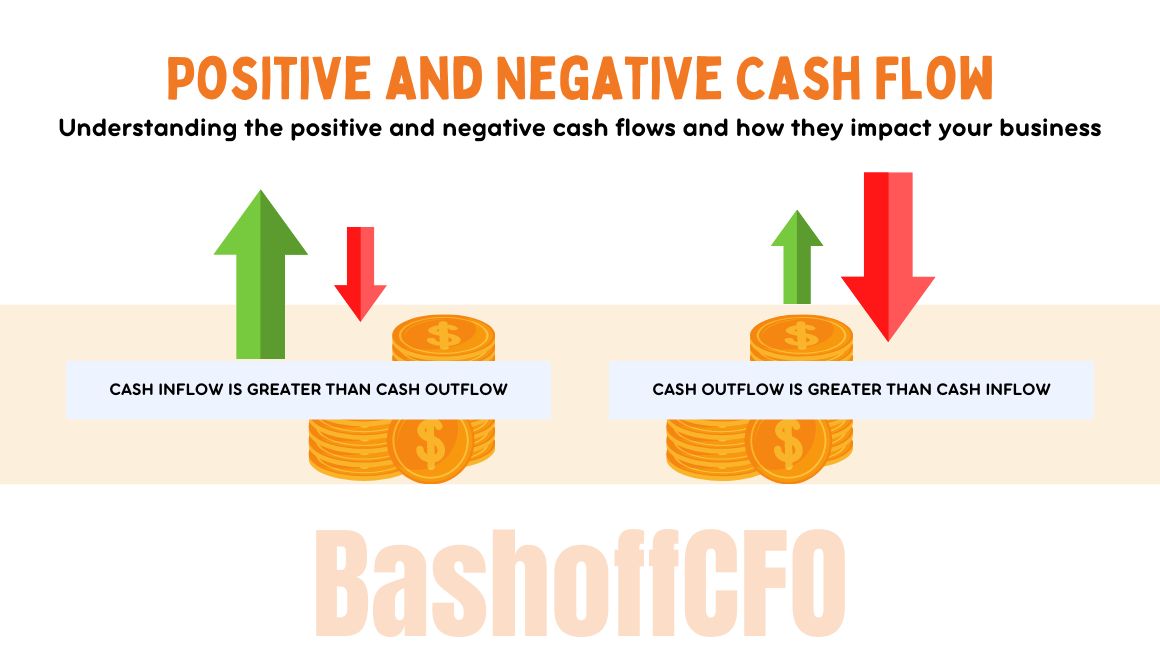
Review:
"How Positive and Negative Cash Flow Impact Your Business"
When putting together a cash flow forecast, you have a solid prediction of your business’s cash situation in the coming months. This is crucial for future planning, allowing you to make the right decisions that promote business growth.
If you’re considering expanding, purchasing additional equipment, or adding more employees, you need to know when it will be safe to do so from a cash perspective. Your cash flow forecast will provide this information.
To read and use your cash flow forecast effectively, you must understand positive and negative cash flow and their impact on your business. Comprehending these concepts will make your cash flow forecast an indispensable tool for business management, ensuring the health of your business.
What is positive cash flow?
Positive cash flow occurs when you have more cash flowing into your business than out of it. This means that your cash spending is less than the amount you received from customers, loans, investments, or asset sales.
Cash flow is measured over fixed periods, usually a month. Consistent positive cash flow indicates that your business is accumulating cash and growing its bank accounts.
What is negative cash flow?
Negative cash flow describes a situation in which your business spends more cash than it brings in. This leads to a depletion of your bank accounts over time.
Businesses spend cash on expenses like payroll, marketing, rent, insurance, and other services. They also use cash to purchase assets like inventory, vehicles, and property. If your cash spending exceeds your cash inflows, your business has negative cash flow.
The impact of positive cash flow on your business
Having positive cash flow means that your business is accumulating cash in its bank accounts. However, this does not automatically justify excessive spending or bonuses.
First, ensure that you have a reliable cash flow forecast to predict future cash flow. Positive cash flow currently does not guarantee it will always be the case. Plan for upcoming spending, such as inventory purchases or loan repayments.
Consider saving your cash to handle future cash obligations. Alternatively, if your cash flow forecast shows that you can comfortably meet future cash requirements and still have additional cash, consider investing in your business for future growth. Evaluate upgrading equipment or expanding to another location.
To determine the best course of action for your business, create a financial plan that considers different scenarios.
The impact of negative cash flow on your business
In a situation of negative cash flow, your business spends more cash than it receives. While watching your bank accounts dwindle can be stressful, this condition may be perfectly acceptable.
If your business is young and starting out, it is common to spend more than you bring in. Initial expenses and attracting customers take time for new businesses to recover costs. As long as you have a plan and see positive results from customer outreach, spending cash during this stage is justified.
Expansion is another circumstance that often results in negative cash flow. When your business grows and you decide to expand into a new location or hire new employees, negative cash flow may be temporary until they start generating revenue.
Choosing to invest in equipment or assets that will yield long-term payoffs may also lead to negative cash flow temporarily.
Effective management of negative cash flow during growth and expansion requires solid planning. Set targets for when your business will return to positive cash flow and monitor progress towards achieving those goals.
If you seek tips on turning negative cash flow around, read our article on options for stemming negative cash flow and becoming cash flow positive.
When experiencing negative cash flow, keep track of your burn rate and runway. The burn rate indicates the amount of cash you are using each month, while the runway measures how long your business can sustain itself at the current burn rate. For detailed explanations of these terms, refer to our cash burn rate and runway guide.
The key to successful cash flow management
Positive and negative cash flow are crucial aspects of cash flow management. Cash is the lifeblood of a business, so it is essential to have a solid strategy and tools to monitor your current cash situation and predict future positions.
We offer a guide for creating a cash flow forecast on your own, but we recommend considering cash flow forecasting tools like LivePlan to simplify the process. Your time should be spent on growing your business and ensuring customer satisfaction, not on cash flow modeling.
Hello!
I’m Andrew Brooks, a seasoned finance consultant from the USA and the mind behind phonenumber247.com.
My career is built on a foundation of helping individuals and businesses thrive financially in an ever-changing economic landscape. At phonenumber247.com, my aim is to demystify the complex world of finance, providing clear, actionable advice that can help you navigate your financial journey with confidence. Whether it’s personal finance management, investment strategies, or understanding the nuances of market dynamics, I’m here to share insights and tools that can propel you towards your financial goals.
Welcome to my digital space, where every piece of advice is a step closer to financial clarity and success!
